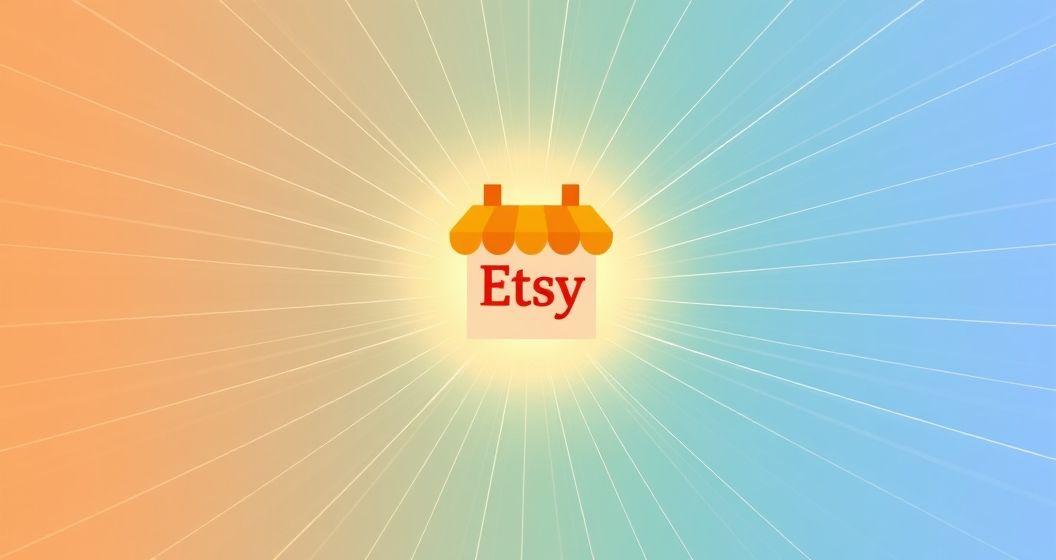In the expansive world of online commerce, establishing a strong presence on platforms like Etsy is crucial for artisan entrepreneurs and small businesses. Effective Etsy marketing goes beyond simply listing products; it involves a strategic approach to attract attention, engage potential buyers, and convert interest into sales. Understanding the nuances of Etsy’s ecosystem and implementing targeted marketing tactics can significantly elevate a shop’s visibility and success. This comprehensive guide explores various dimensions of Etsy marketing, providing actionable insights for sellers aiming to thrive in a competitive marketplace.
Understanding Etsy Marketing Fundamentals
Etsy marketing encompasses all activities designed to promote an Etsy shop and its products, ultimately leading to increased sales. It involves optimizing product listings for search, utilizing the platform’s advertising tools, and leveraging external channels to drive traffic. A successful Etsy marketing strategy ensures that unique handmade or vintage items reach their ideal audience, standing out amidst countless other offerings. This foundational understanding is vital for any seller looking to build a sustainable and profitable online business.
1. Mastering Etsy SEO for Product Discovery
Etsy Search Engine Optimization (SEO) is paramount for ensuring your products appear prominently in search results. It involves carefully selecting relevant keywords that potential buyers use to find items like yours. Integrating these keywords naturally into your product titles, tags, and descriptions helps the Etsy algorithm understand what you offer. Effective Etsy SEO is a continuous process of research and refinement, adapting to buyer behavior and platform updates to maintain visibility.
Crafting compelling titles and tags is the cornerstone of Etsy SEO. Titles should be descriptive and include primary keywords that accurately reflect your item, while also being appealing to human readers. Tags, which are hidden from buyers but crucial for search, should cover a wide range of terms, including long-tail keywords and synonyms. Think about all the ways a buyer might search for your product, from broad categories to specific attributes, to maximize your reach.
2. Creating Irresistible Product Photography
High-quality product photography is perhaps the single most impactful element in Etsy marketing. Since buyers cannot physically interact with items online, photographs serve as their primary point of contact. Clear, well-lit, and aesthetically pleasing images that showcase products from multiple angles and in real-life contexts are essential. Professional-looking photos build trust and curiosity, encouraging potential customers to click on your listing and explore further details.
3. Utilizing Etsy Ads Effectively
Etsy Ads offer sellers a powerful tool to boost visibility for specific listings. This paid advertising option allows shops to promote products directly within Etsy search results and on various category pages. When approaching Etsy Ads, it is essential to set a realistic daily budget and carefully select which products to promote, focusing on best-sellers or new items that need an initial push. Monitoring ad performance closely helps optimize spending and ensures a positive return on investment.
Strategic budget management and targeting are key to successful Etsy Ads campaigns. Rather than simply promoting every item, analyze your shop’s data to identify products with high conversion potential. Adjust bids and monitor keyword performance to ensure your ads are reaching the most relevant audience. Regularly reviewing ad statistics, such as impressions, clicks, and conversion rates, allows for data-driven decisions that enhance the effectiveness of your marketing spend.
4. Engaging Your Audience Beyond Etsy
Effective Etsy marketing extends beyond the platform itself, embracing external channels to drive traffic and build a brand. Social media platforms like Instagram, Pinterest, and Facebook are ideal for showcasing products, sharing behind-the-scenes content, and engaging directly with a broader audience. Creating a consistent brand voice and visual style across all channels reinforces your shop’s identity and attracts followers who may eventually become loyal Etsy customers.
Leveraging external marketing efforts can significantly expand your reach. Building an email list, for instance, allows for direct communication with interested buyers, informing them about new arrivals, promotions, or shop updates. Collaborating with influencers or participating in online communities related to your niche can also introduce your shop to new segments of potential customers. These diversified marketing efforts create multiple pathways back to your Etsy shop.
5. Cultivating Exceptional Customer Experience
Outstanding customer service is a silent yet powerful form of Etsy marketing. Prompt responses to inquiries, clear communication throughout the order process, and going the extra mile to ensure buyer satisfaction build trust and encourage positive reviews. Satisfied customers are more likely to return for future purchases and recommend your shop to others, creating invaluable word-of-mouth marketing that fuels long-term growth and enhances your shop’s reputation.
6. Analyzing Your Shop’s Performance Metrics
Regularly reviewing your Etsy Stats is fundamental for informed Etsy marketing decisions. This analytical dashboard provides crucial insights into how buyers interact with your shop and listings, offering data on views, favorites, orders, and revenue. Understanding which products are performing well, where your traffic is coming from, and your conversion rates allows for strategic adjustments to your marketing efforts, maximizing their impact.
Identifying growth opportunities through data analysis involves more than just looking at sales figures. Pay close attention to trends in search terms, popular categories, and buyer demographics. Analyzing abandoned carts or low conversion rates on certain listings can pinpoint areas needing improvement, such as better photography, clearer descriptions, or more competitive pricing. Data-driven insights transform guesswork into precise, effective marketing strategies.
7. Strategic Pricing for Competitiveness and Profitability
Setting the right price for your Etsy products is a delicate balance between market competitiveness and ensuring profitability. It involves calculating the cost of materials, labor, Etsy fees, and shipping, then adding a reasonable profit margin. Researching similar products on Etsy and understanding market demand can help position your prices strategically. While competitive pricing attracts buyers, it is equally important that your pricing structure sustains your business.
Conclusion: Sustaining Growth Through Continuous Etsy Marketing
Successful Etsy marketing is not a one-time effort but an ongoing commitment to optimization, engagement, and analysis. By diligently applying SEO techniques, presenting products through captivating photography, utilizing Etsy Ads judiciously, and expanding reach through external channels, sellers can significantly enhance their shop’s visibility. Cultivating an exceptional customer experience and consistently analyzing performance metrics further refines strategies, ensuring sustained growth and a thriving presence on the Etsy platform. The journey of an Etsy entrepreneur is one of continuous learning and adaptation, where thoughtful marketing paves the way to lasting success.






